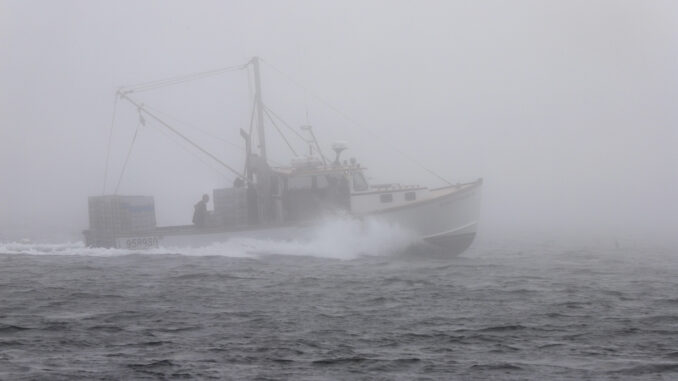
Fog has a way of transforming the familiar into the mysterious. Along coastal regions, where shifting weather is part of daily life, fog and mist often roll in unexpectedly — softening horizons, muting colors, and lending scenes an almost dreamlike quality. For travel photographers, these moments are invitations to slow down, look closer, and capture the mood as much as the landscape.
The Allure of Coastal Fog
On bright days, coastlines brim with detail — gleaming water, colorful boats, and bustling piers. But when fog rolls in, those same subjects take on an entirely new character. A row of boats becomes a study in shape and suggestion. Lighthouses appear and vanish offering dramatically different frames within minutes. Even a lone buoy floating offshore transforms into a haunting focal point against a muted horizon.
This subtle obscuring is what makes fog so captivating. It draws viewers in, inviting them to imagine what lies beyond and to feel the mystery of place.
Timing: Chasing the Light in the Mist
Fog and mist are most common along the coast in the early morning and evening, when cool ocean air collides with warmer land temperatures. Harbors, tidal inlets, and coves are especially photogenic at dawn, with boats appearing and disappearing as the mist shifts.
The interplay of fog and sunlight is where the real magic happens. As the sun rises or sets, beams of golden light can pierce through gaps in the mist, spotlighting a scene or glowing softly through layers of atmosphere. These moments are fleeting — arrive early, stay alert, and be ready to adjust as the fog drifts and reshapes the landscape.
Composing for Mood
Fog simplifies a scene, so let it guide your compositions toward atmosphere and emotion.
Simplify: Lean into minimalism. A figure walking the beach or a single moored boat becomes powerful when surrounding details fade away.
Layer: Fog often reveals the foreground clearly while background elements fade gradually, creating painterly tonal layers.
Look for Silhouettes: Reduced contrast makes silhouettes stand out, especially when subjects are backlit by brighter patches of mist. Boat masts, rigging, or a lone figure can create striking forms.
Embrace Reflections: Calm water doubles the mood, mirroring boats, pilings, or shoreline details to amplify atmosphere.
Gear Considerations for Foggy Photography
Photographing in coastal fog isn’t only about composition — it also means protecting your gear and choosing tools suited to damp, low-contrast conditions.
Weather Protection: Fog is moisture in the air, and over time it can collect on your gear. A lightweight rain cover or plastic sleeve protects your camera and lens, while a microfiber cloth helps wipe away condensation. Check your lens often — droplets can soften an image in ways you don’t intend.
Lens Hood: Still useful in fog, a hood helps shield your lens from droplets and reduces flare when the sun breaks through.
Filters: A UV or clear filter adds a layer of protection against moisture. Neutral density (ND) filters are excellent for long exposures, softening water beneath a pier or blurring a boat gliding through the mist. Polarizers are less useful in fog’s flat light and may reduce its natural glow.
Tripod: Essential in low light, especially for longer exposures or layered compositions.
Lens Choice: Wide angles emphasize atmosphere and scale, while telephotos compress misty layers and highlight distant boats or headlands. Since fog often carries extra moisture, sticking with one versatile lens helps you avoid frequent changes and limits the risk of condensation getting inside your camera.
Batteries & Cards: Cold, damp air drains batteries faster than usual. Carry spares and keep gear dry between shoots.
Technical Considerations
Fog scatters light, lowering contrast and softening shadows. This can fool your camera’s meter into underexposing. Try dialing in +1/3 to +2/3 stop of exposure compensation to keep images bright and atmospheric.
Autofocus may also struggle in dense fog. Switch to manual if needed, or lock onto high-contrast edges such as rigging or a pier’s outline. And always shoot in RAW — it gives you flexibility to fine-tune tones later without losing the delicate softness of the scene.
Embracing the Mystery
Photographing in coastal fog is as much about suggestion as detail. Shapes emerge, layers shift, and clarity fades — creating moods that feel timeless and otherworldly.
So the next time you wake to a gray, misty morning by the sea, don’t leave your camera behind. Step into the fog and let the coast reveal itself in unexpected ways. The images you capture may feel less like documentation and more like dreamscapes — ethereal, mysterious, and unforgettable.
Of course, knowing when those foggy mornings will appear can elevate your work. In our next article, we’ll explore tools and tricks that can help you anticipate when — and where — the mist will roll in.
